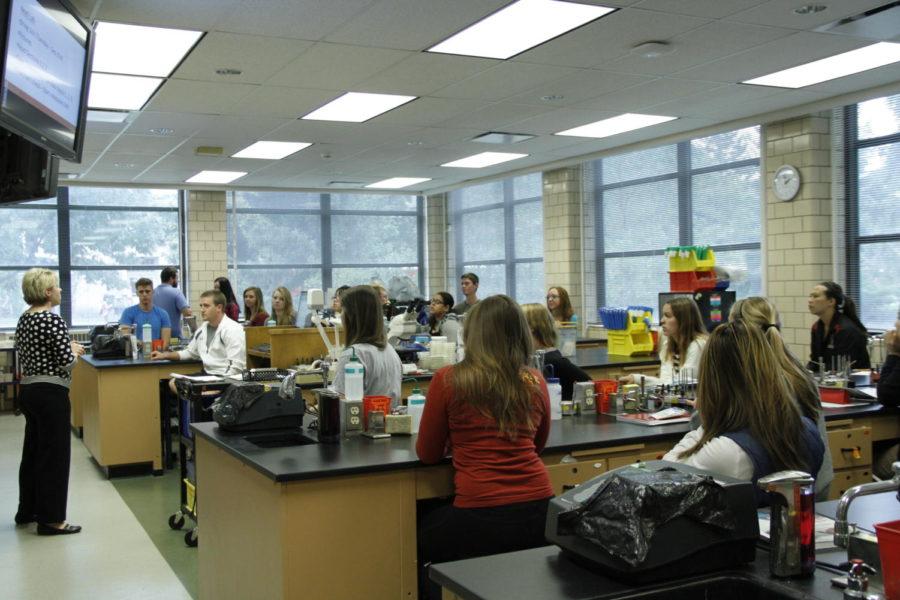Overuse of antibiotics poses health risk
Claudia Lemper lectures to her Microbiology 302L class about their research projects to find and test soil samples in Science I on Sept. 23. Lemper’s goal for her lab class is to stop antibiotic resistance, but she also hopes that this class will get students “excited about science.” Lemper works as a part of the Small World Initiative.
September 25, 2014
According to the New England Journal of Medicine, 258 million courses of antibiotics were prescribed to people in the United States in 2010.
Dr. Martin J. Blaser, professor at New York University and director of the NYU Human Microbiome project, spoke of the dangers of overusing antibiotics to a crowd of about 230 people Sept. 18 at the College of Veterinary Medicine.
Blaser said antibiotics are killing ancient microbes in our bodies. The microbes in our body help defend against invaders, make vitamins and digest food.
“[People] think [antibiotics] have all the benefits and no cost,” Blaser said.
Americans use 40 percent more antibiotics than Swedes do, and they’re just as healthy according to Blazer.
Blaser and his colleagues have been doing studies on the correlation between the overuse of antibiotics and health issues such as celiac disease and obesity. People who had recently developed celiac disease were found to be 40 percent more likely to have been prescribed antibiotics in the preceding months compared to those who didn’t.
The study found the more courses of antibiotics administered, the higher the risk of disease.
“We’ve given antibiotics to mice and we’ve shown that the mice have become obese,” Blaser said.
It’s important to note that their findings don’t reflect causation, but rather correlation, Blaser said. Taking more antibiotics indicates there might be a higher risk for developing health issues.
“Our goal in research is to understand what are the exact organisms that have disappeared,” Blaser said.
In the last 50 years, Blaser observed previously rare epidemics like asthma, food allergies, juvenile diabetes and obesity are becoming more frequent in the population.
According to Blaser, as new diseases and epidemics are arising, human microbes are disappearing.
Blaser said he doesn’t think antibiotics are bad — they just need to be used in moderation. They’ve saved thousands of lives, including his when he had typhoid fever.
“We need to be much more judicious in how we use them,” Blaser said. “We must minimize the damage and then look for a repair.”
Blaser said American children were receiving 10 courses of antibiotics on average by the time they were 10 years old.
He said pediatricians need to spend more time examining kids and tell parents when they don’t need antibiotics.
“We’re going to need to develop narrow spectrum antibiotics,” Blaser said.
Broad spectrum antibiotics have the ability to kill a wide variety of bacteria, but that also means it’s killing a wide variety of microbes.
“The broader the antibiotics and the more they are used, the bigger collateral effects on our resident microbes,” Blaser said.
Michelle Tran, junior in microbiology, thought Blaser’s lecture was thought-provoking.
“Antibiotics are meant to help you, but with societal influences it could cause health issues,” Tran said.
Tran is taking the medical microbiology lab with lecturer Claudia Lemper, who arranged for the class to be a part of a worldwide program to search for new antibiotics.
“This is going to help the students tie into the big impact,” Lemper said, “They can make a change in the world. The research they do as microbiologists can affect future generations.”

















